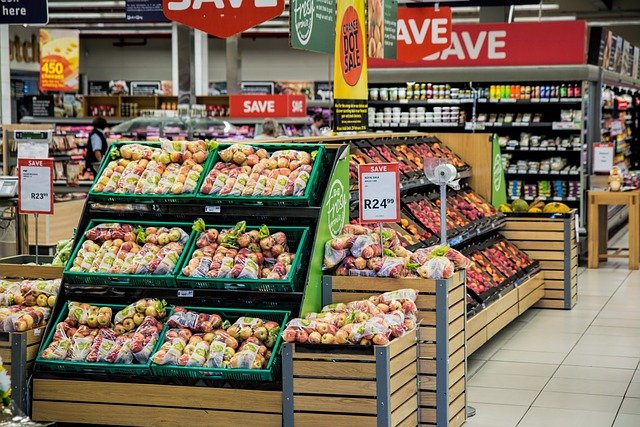Top Clearance Sales in USA That Can Help Stock Essentials for a Year
Strategic shopping during major clearance events can help households build substantial stockpiles of everyday essentials while maximizing savings. These annual sales cycles offer opportunities to purchase non-perishable items, household supplies, and seasonal goods at significantly reduced prices, making it possible to maintain well-stocked homes throughout the year.

How to Plan Your Clearance Shopping Strategy
Effective planning begins with creating a comprehensive inventory of your household’s annual consumption patterns. Track how much your family uses of items like toiletries, cleaning supplies, paper products, and canned goods over a three-month period, then multiply by four to estimate yearly needs. Create a priority list ranking essentials by importance and storage requirements. Set a realistic budget that allows you to take advantage of deep discounts without overextending financially. Research historical pricing patterns for your target items to recognize genuine deals when they appear.
Mark your calendar with key clearance periods throughout the year. Post-holiday clearances typically occur in early January, back-to-school clearances happen in late August and September, and end-of-season clearances for summer items usually start in July. Many retailers also conduct inventory clearances in February and March to make room for spring merchandise.
Which Items Are Best to Stock Up During Sales
Non-perishable food items represent excellent stocking opportunities during clearance events. Canned goods, dried pasta, rice, cereal, and shelf-stable items can be purchased in large quantities when prices drop significantly. These products typically have long shelf lives and consistent household demand, making them ideal for bulk purchasing.
Personal care and household cleaning products offer substantial savings potential. Items like toothpaste, shampoo, soap, laundry detergent, and paper towels are used consistently regardless of season. These products often have extended expiration dates and don’t require special storage conditions. Seasonal items like holiday decorations, winter clothing, and outdoor equipment frequently see price reductions of 50-70% after their peak seasons end.
Over-the-counter medications, vitamins, and first aid supplies are practical choices for clearance shopping. These items have defined expiration dates but typically remain effective for years when stored properly. School and office supplies during back-to-school clearances can provide year-long inventory at fraction of regular prices.
How to Get Maximum Benefits from Clearance Sales
Combining multiple savings strategies amplifies clearance sale benefits. Stack manufacturer coupons with store sales and loyalty program discounts whenever possible. Many retailers offer additional percentage discounts on already-reduced clearance items for loyalty members. Sign up for store newsletters and apps to receive early notifications about upcoming clearance events and exclusive member pricing.
Compare unit prices rather than total costs to ensure genuine savings. Some clearance items may still cost more per unit than regular-priced alternatives or bulk purchases from warehouse stores. Use price-tracking apps to monitor historical pricing and verify that clearance prices represent actual reductions.
Time your shopping strategically within clearance periods. Prices often drop progressively as retailers become more motivated to clear remaining inventory. However, balance deeper discounts against item availability, especially for high-demand products.
| Retailer | Typical Clearance Periods | Average Discount Range | Best Product Categories |
|---|---|---|---|
| Target | January, March, July, September | 30-70% | Seasonal items, home goods, clothing |
| Walmart | February, August, October | 25-50% | Electronics, household essentials, toys |
| CVS/Walgreens | Post-holiday, seasonal transitions | 40-75% | Health products, seasonal merchandise |
| Home Depot/Lowe’s | End of seasons, January | 30-60% | Garden supplies, seasonal hardware |
| Grocery Chains | Monthly rotation varies | 20-50% | Non-perishable foods, household items |
Prices, rates, or cost estimates mentioned in this article are based on the latest available information but may change over time. Independent research is advised before making financial decisions.
Storage considerations become crucial when buying essentials in large quantities. Designate specific areas for your stockpile and maintain proper organization with rotation systems ensuring older items get used first. Climate-controlled storage prevents damage to sensitive items like medications and paper products. Keep inventory lists to avoid duplicate purchases and track expiration dates.
Monitor your consumption patterns over time and adjust purchasing strategies accordingly. What seems like a year’s supply might actually last longer or shorter than anticipated based on changing household needs, family size, or usage habits.
Building a year-long supply of essentials through strategic clearance shopping requires patience, planning, and disciplined execution. Success comes from understanding your household’s actual needs, recognizing genuine value, and maintaining organized systems for storage and rotation. This approach can result in significant annual savings while ensuring your household remains well-supplied with necessary items throughout all seasons.




